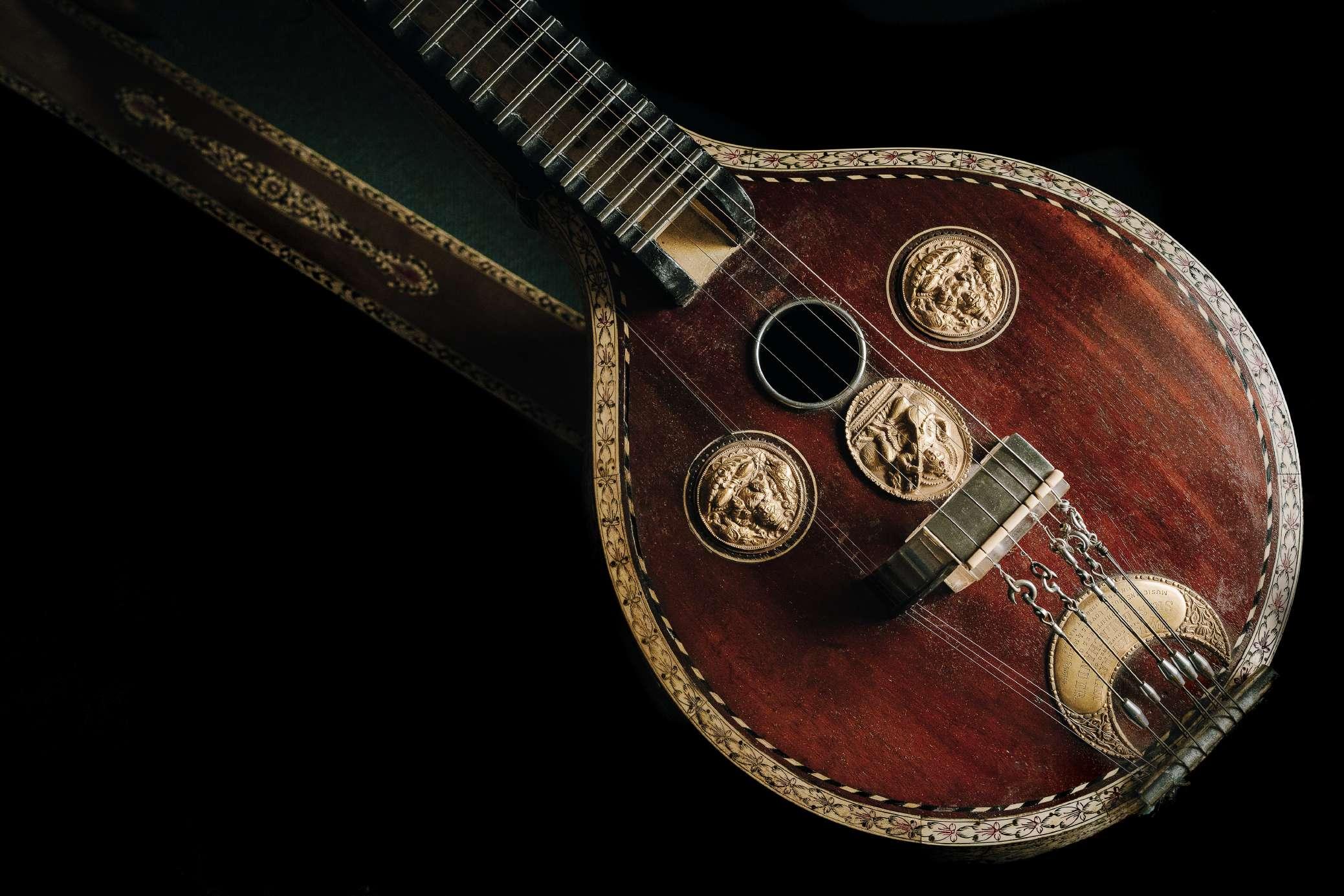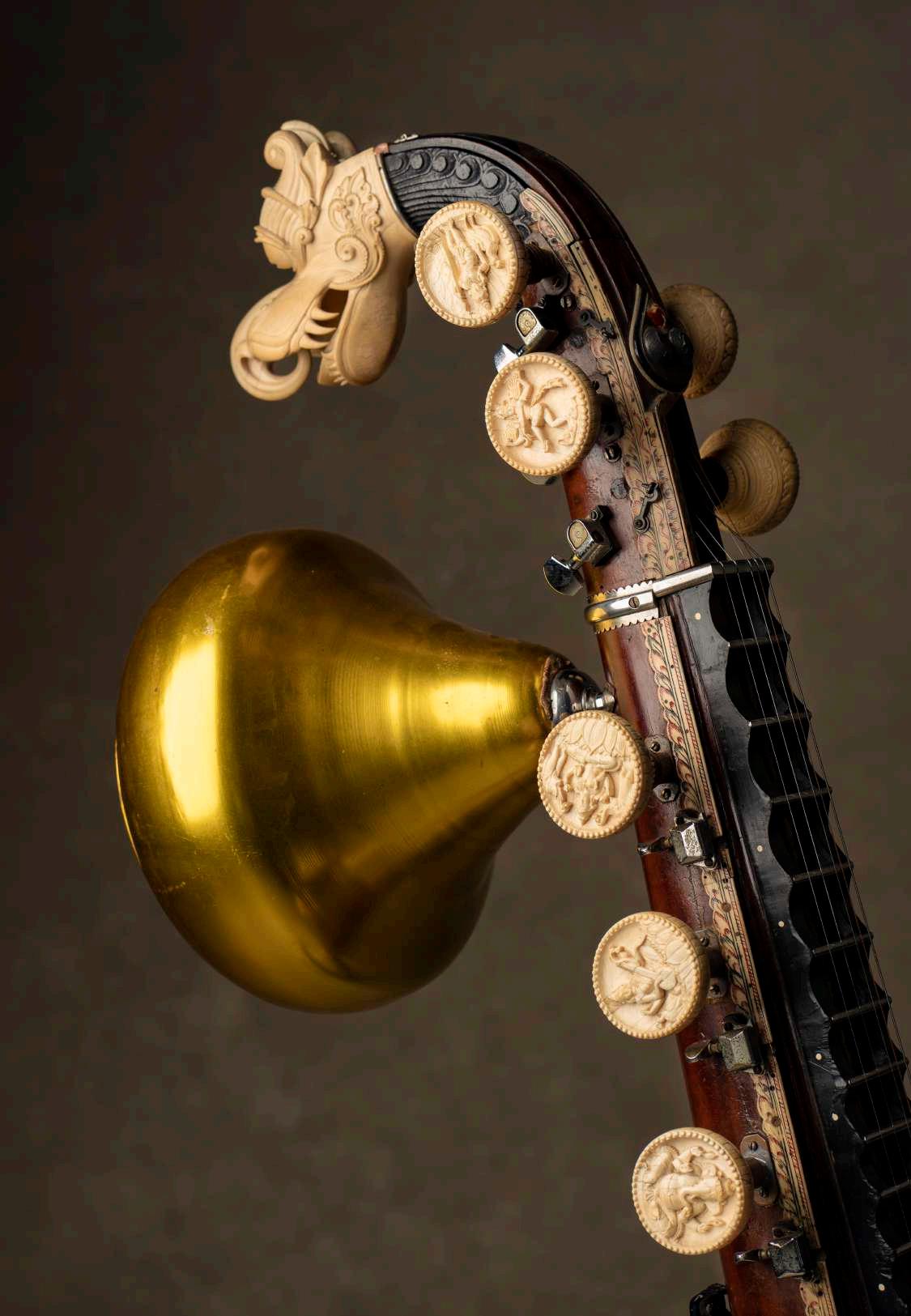
7 minute read
S Balachander, the phenomenon
from Vaak Issue 03 2021
Baradwaj Raman; Photographs by Amar Ramesh
It is said that all real learning is self-learning and no one embodied that better than my grandfather, Padma Bhushan Dr. S. Balachander. For many years as a kid, I would listen to his audio recordings and wonder how he conceived such unimaginable phrases on the Veena, especially being a self-taught musician. He had no guru whatsoever but his grasping power and keen interest in everything under the sun was incredible. In this article I will concentrate mainly on his journey to find the ultimate sound of and on the Veena.
Advertisement
S. Balachander, more known as ‘SB’ during his time, started his musical journey when he was 5 years old as a Kanjira player and the true-blue prodigy that he was, his eighth year saw him performing concerts as an accompanying artiste on the Tabla. During one such concert tour in Karachi when Balachander was 9 years old, he was gifted a Sitar by a lady in the audience. She had bought it for her own son who found no use for it and had consigned it to the loft. Some strings were rusted and others missing. But a new world had opened up to Balachander’s insatiable genius. That lady’s gift was to be a key steppingstone to his home, his moksha, the Veena.

Within 9 months Balachander had repaired, practiced on and mastered the instrument only to present his first Carnatic music concert on the Sitar. Never one to conform, SB as an audacious pre-teenager, performed Carnatic concerts on the Sitar and also gave vocal concerts in Hindustani music. Within a very short span of time, he understood that Sitar was unsuitable for Carnatic music and in the Saraswati Veena, he found his true calling.
During my teenage years, I would try to replicate some of the phrases that SB essayed effortlessly but could never understand how it was played. SB did not have many students and the ones he had never pursued music as a career. They learnt under him only for personal satisfaction. There are not many musicians who even understood how he played such extra ordinary melody, leave alone attempt to replicate it. There was no easy way for me to understand his music. I had broken countless strings, each trial and error bringing me closer in my relentless pursuit of the SB sounds. After many years of practice, I believe I have come closer to the essence.

So, what is so unique about the elusive Balachander Bani as it is called?
But that takes nothing away from the awe I continue to feel while listening to him, his music always being greater than the sum of the notes.
While his style of Veena playing transformed over the years, the core of his pursuit was the same. He saw in the Veena potential to match and even surpass that of the human voice. So, he created a revolution in the playing technique, pulling whole octaves, adding Sitar inspired fingering techniques and even pulling in the pit of the Veena. The array of techniques he created with the divine instrument, each mastered to mirror his incredible emotive potential, was also another reason for his music to be spontaneous and out of the ordinary. SB’s playing technique was characterized by analyzing the ragas, the songs, the meanings of the songs and the emotional state of the composer who composed it. Another aspect of SB’s musical pursuit, one that is oft overlooked but equally important, is his experimentation with the design and acoustic quality of the veena.
One of the first difficulties SB faced as a Veena player was that for him to play a difficult raga like Devagandhari or Yadukulakambhoji, a lot of pulling of strings or bending of strings needed to be done. Very often when he practiced his pulling, he realized that the strings would go out of tune. There were two things that caused the issue.

First, the strings were resting on two bridges on either side, and both of them were carelessly glued on the Veena on approximation, and neither of them were strong enough to hold the tension of the strings. The second, and the most important issue was that the brittle nature of the Veena’s resonator would cause it to warp under pressure of the resonator side bridge when SB tried to pull and play. To resolve this issue, the resonator would have to be thicker, making the whole instrument heavier. SB would have to start customizing his Veenas.
As a solution, SB found the best Veena maker of his time, a specialist who made Veenas from scratch with utmost care throughout the process, Narayana Aachari (from Tanjavur). After much convincing, Narayana Aachari agreed to make Veenas for SB, a few kilos heavier than the Veenas he had been making all the while for others. SB made it a point to be part of the process when the Veena was made, giving specific instructions so that the instrument was made according to his liking and preference. As regards the bridges, after much thought, he settled on Perspex (highest grade of acrylic used for fabricating aircraft windows) so that they don’t warp under pressure. There was one other issue that nagged him. He was annoyed by the screeching sound of the strings that contact the bridges when pulling and playing. Even to this day, the Veena makers fabricate the bridge top (the plate on top of the bridge over which the strings pass) and the frets in copper or brass. This caused a significantly annoying sound when contacted with the string due to excessive friction caused. Again, after lots of research and trial and error, SB settled on high quality 316 grade stainless steel. Every part of the instrument that was in metal was immediately switched to stainless steel. This drastically reduced the friction and enhanced his playing technique significantly. These, however, did not solve another important problem.

Even after doing all these alterations SB realized that the strings still went out of tune though not as frequently as before. The quest for the ideal solution led SB to the more reliable Guitar tuning machine heads rather than the dated gearless wooden tuners (Birudai as they are called in Veena parlance) of the Veena. This greatly reduced the strings from going out of tune. This also reduced the time it took to restring the Veena. Since the gearless wooden pegs became redundant, SB found the best ivory sculptor of India, Viswam, to sculpt all the gearless tuners in ivory with each one depicting a unique God or Goddess. SB also made it a point to affix his awards on his Veenas. This was his way of thanking the instrument and the Goddess Saraswathi herself, for showering him with the knowledge and musicality that was unique to him. SB tried a variety of strings from lots of other instruments to enhance the tone and volume of the Veena. He experimented generously with Piano strings, Cello strings, Bass strings, Guitar strings, etc. SB also customized amplification methods like microphones, acoustic pickups, packaging and transportation boxes for the Veena's safety. With websites like Amazon or Bajaao, we have easy access to electronics today. But in his time, access to these products were not only difficult but they were also unimaginably expensive.
SB was not just unapologetic in his pursuits to try new things on the Veena, but also in his self-analysis. His style of playing was tough and required hours of practice; he did asura sadhakam on the instrument. Shantha Balachander, my grandmother, says that SB felt bad that he missed practice every time he went on his film shooting trips as director so much that he would practice double the usual time once he came back. Be it to beg forgiveness for playing a phrase out of tune, or to thank God when he stumbled across a beautiful musical phrase, SB used the phrase ’Andavane’ lavishly. For all the world, Veena was SB and for SB, the Veena was all.

- Baradwaj Raman is a Veena artiste, sound engineer and music composer based out of Madras. He is also the grandson of Veena Maestro S.Balachander. He has performed in leading Sabhas in India and across the world, including at the Music Academy, Narada Gana Sabha, Indian Fine Arts Society, Bharat Kalachar, Bharatiya Vidya Bhavan in London and SIFAS Singapore. His Veena, called the Sarasvitar, is portable, detachable, extremely light weight, and still maintains amplitude and tonal quality of the instrument. He is the recipient of Nadha Kala Vipanchee and Tamizh Yazh Isai Selvan awards.










